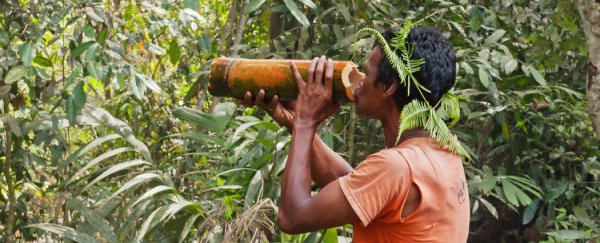A new study has found that traditional Aboriginal and Indian plant extracts could be used to manage type 2 diabetes by reducing instances of weight gain, hypertension and immune suppression.
Diabetes is one of the fastest growing metabolic diseases in the world, so coming up with better treatment options has never been more important. Especially since current drugs are known to cause weight gain, making them far from optimal for patients to use long-term. So Vandana Gulati, a pharmacologist at the Swinburne University of Technology in Australia, investigated the anti-diabetic potential of seven Australian Aboriginal medicinal plants and five Indian Ayurvedic plants to see if they could offer a new solution.
Seven of these extracts have widespread use in Aboriginal communities, while the other five are used in traditional holistic Indian medicine known as Ayurveda. Ayurvedic medicene evolved in India more than 5,000 years ago, with many considering it the world's oldest healthcare system.
Gulati wanted to see the plants' influence on how our body processes glucose and forms fatty tissues - a process known as adipogenesis. "The Australian Aboriginal plants were selected on the basis of availability and their known medicinal activities," she writes in the BMC Complementary and Alternative Medicine, while the Indian Ayurvedic plants were selected based on their reported anti-diabetic potential.
Ethanolic extracts of the plants were derived and tested on the fat cells of mice. "We found that some of the plant extracts stimulated glucose uptake in fat cells while others reduced fat accumulation in fat cells," Gulati said in a press release.
Gulati found the Aboriginal plant extracts of Witchetty Bush and Australian sandalwood stimulated glucose uptake, while Dead finish, Turpentine bush and Caustic weed reduced fat accumulation in cells. When it came to the Indian plant extracts, Kali musli was good for both glucose and fat build-up, while Vijayasar and Kalmeigh were effective in reducing accumulation in fat cells alone.
The same plant extracts were also screened for cytoxicity in cancerous cells for cervical and lung cancer. Previous studies have found that diabetes and cancer are linked, due in large part to a mechanisms called hyperinsulinaemia, where the risk of low insulin in diabetes causes the over-production of insulin-receptor proteins, and this affects the growth of cancer cells. The link between these two diseases led Gulati to assess how the plant extracts may combat cervical and lung cancer. While none of the plant extracts affected lung cancer cells, Gulati found two extracts from Australian plants - Witchetty bush and Dead finish - effective in combatting cervical cancer. At relatively small dosages, these two extracts inhibited the response of these cells by 50 percent.
This is far from the first time natural scources have been used to protect against cancer. In fact, "over 60 percent of the currently used anti-cancer agents are derived from natural sources, including plants, marine organisms and micro-organisms," writes Gulati.
Gulati's research built on a 2012 Swinburne study by Enzo Palombo which found some of these extracts could had an antioxidant effect and could help with carbohydrate metabolism. "Australian medicinal plants are an untapped source and should be further explored as potential treatments for disease," said Palombo.
While this research was conducted at the cell level, the next step will be to see how the plant extracts affect animals and humans directly.
